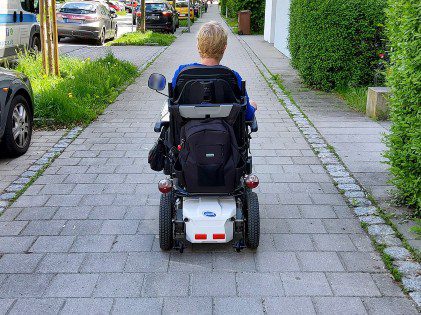If you have been unaware of what’s going on around you, gig economy engagement might be a relatively new term for you. It is about engaging independent workers via a part-time or full-time contract. Over 36 percent of workers in the United States take part in a gig work arrangement. There are a lot of benefits attached to the gig economy, such as flexibility, freedom, as well as low business overhead. Technology is the major requirement for someone who participates in gig freelance work. Nothing much is required if you want to engage in such a work arrangement. All you need is a smartphone and an unlimited data plan or access to Wi-Fi. That’s all. But how does the gig economy impacts the disabled? What are the advantages and disadvantages for them? Find out below.
Freedom and Flexibility
 The freedom and flexibility of a gig work arrangement can benefit disabled people. They would need some time off their daily schedule to visit the doctor, go for therapy sessions, or rest if they are lacking the stamina to continue working for more than a few hours. These are, of course, some restrictions in the case of a full-time job. However, as far as the gig economy is concerned, disabled people can work whenever they want and for as long as they can. There are no restrictions as such. This is an upside for them.
The freedom and flexibility of a gig work arrangement can benefit disabled people. They would need some time off their daily schedule to visit the doctor, go for therapy sessions, or rest if they are lacking the stamina to continue working for more than a few hours. These are, of course, some restrictions in the case of a full-time job. However, as far as the gig economy is concerned, disabled people can work whenever they want and for as long as they can. There are no restrictions as such. This is an upside for them.
Less Engagement
Gigs are all about results. It hardly has anything to do with the process. If you are taking part in an interview sitting in a wheelchair, no one would count that as your disability and think that you are not fit for the job. Gig service providers welcome everyone. You have to perform and get the job done. That’s it. If the results are not favorable, they will lead to bad reviews, thus ending the gigs. There is no bias involved here.
Disabled people have actually garnered quite a lot of success while working in a gig work arrangement. For your information, a wheelchair user has earned one of the highest ratings on Uber Eats, delivering meals within a four-mile radius in Miami. There are similar success stories that can be truly inspiring. With that being said, there are certain downsides of the gig economy that need to be discussed.
Inaccessibility of Gig Apps
 To take part in the network of the gig service provider, one must know how to use the gig app. There are a host of gig applications that don’t function properly with assistive technology. One app called Fiverr doesn’t have buttons in their app. This button is among the basic requirements if a blind person wants to access the app. This failure to access prevents those who use screen readers from offering independent services.
To take part in the network of the gig service provider, one must know how to use the gig app. There are a host of gig applications that don’t function properly with assistive technology. One app called Fiverr doesn’t have buttons in their app. This button is among the basic requirements if a blind person wants to access the app. This failure to access prevents those who use screen readers from offering independent services.
Transportation
Transportation is bound to be a serious concern for people who are disabled. While some don’t possess a car, others can’t drive one. If it’s a delivery gig, public transportation is almost out of the question as it’s too slow, as well as unreliable. For the disabled, walking or cycling is also an issue that can’t be ruled out at any cost. The gig apps that require transportation are indeed among the downsides of the gig work arrangement.
Lower Payments
 In the case of delivery services, wheelchair users have to pay a considerable penalty. Disabled people will take around 5 minutes to get in the car and get out of it, that too in a situation when it’s not too hot, snowing, or raining. A non-disabled person would usually take 15 seconds at most to do the same. Plus, non-disabled individuals will not make as many trips to the car as a person with disabilities, while delivering the food. A normal person would run up the stairs, connect with the customer, and hand over the food. A disabled person would have to search for a ramp around a building.
In the case of delivery services, wheelchair users have to pay a considerable penalty. Disabled people will take around 5 minutes to get in the car and get out of it, that too in a situation when it’s not too hot, snowing, or raining. A non-disabled person would usually take 15 seconds at most to do the same. Plus, non-disabled individuals will not make as many trips to the car as a person with disabilities, while delivering the food. A normal person would run up the stairs, connect with the customer, and hand over the food. A disabled person would have to search for a ramp around a building.
Now, coming to the payment part, a normal person would take around 25 minutes to half an hour to complete the entire gig of food delivery. On the other hand, a disabled person would take at least 50 minutes. While the payment for a normal person is $24 every hour, the disabled individual is entitled to $12 per hour. The delay might cut down the tip as well.
There are a lot of things that gig service providers can do to empower the disabled. Until and unless some constructive steps are taken, people with disabilities would not be able to access the gig work environment fully.




